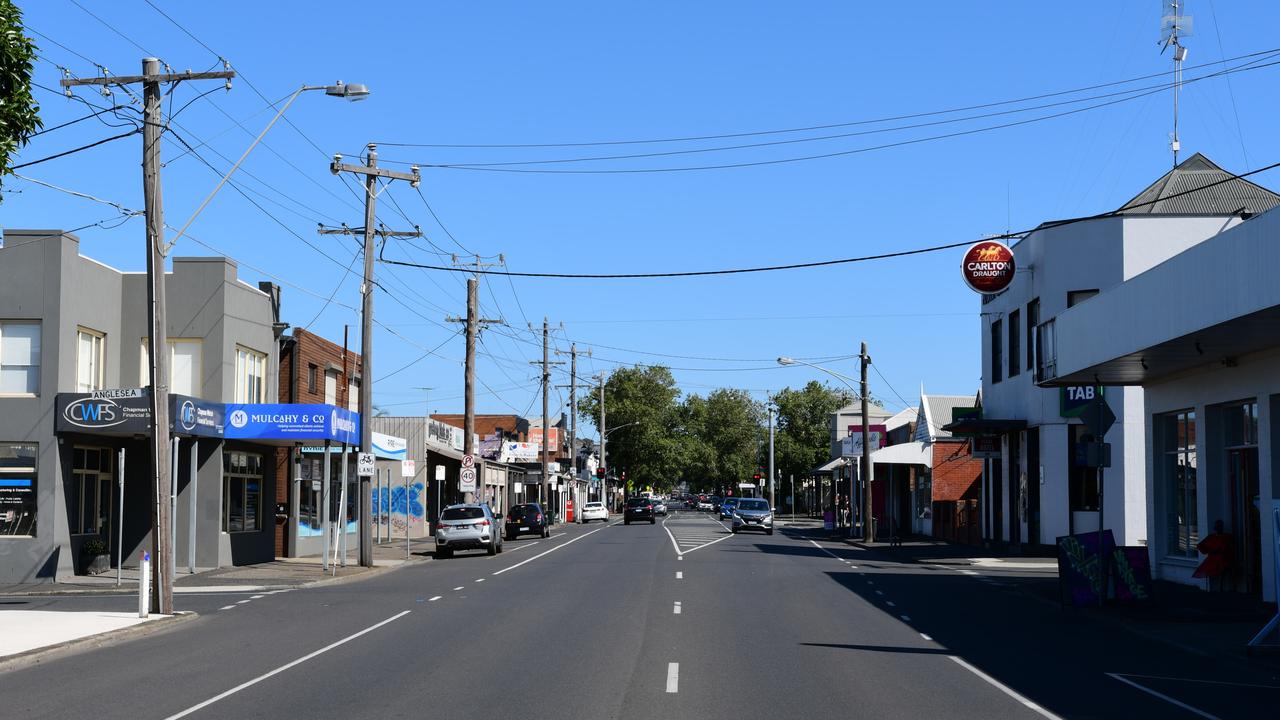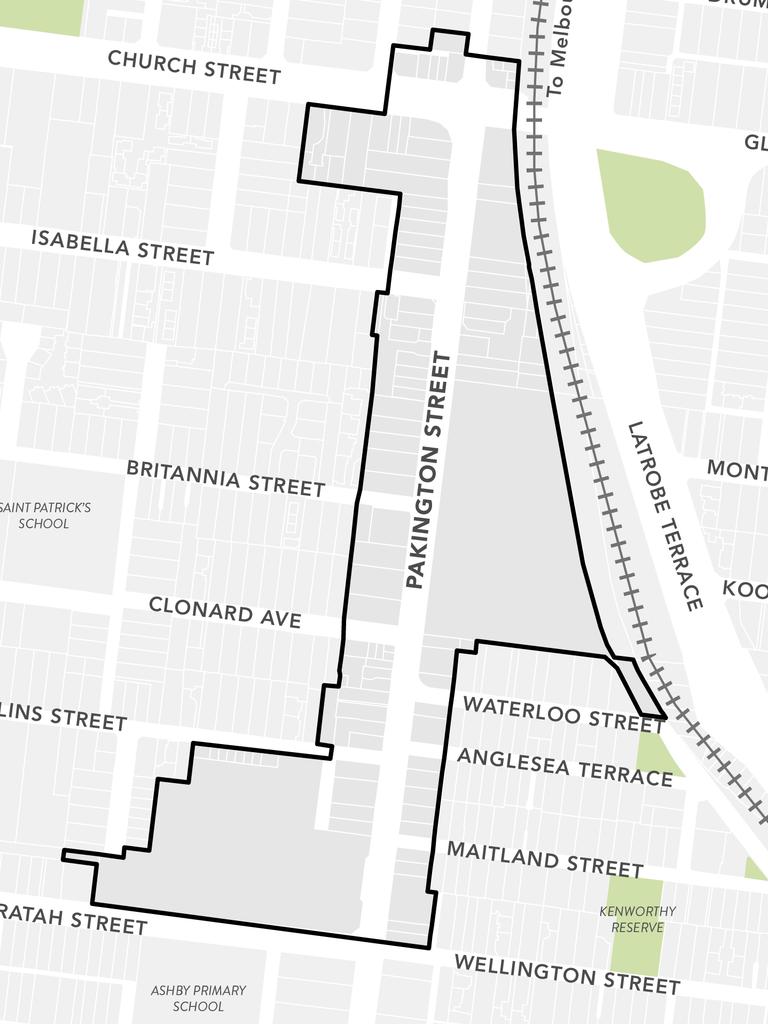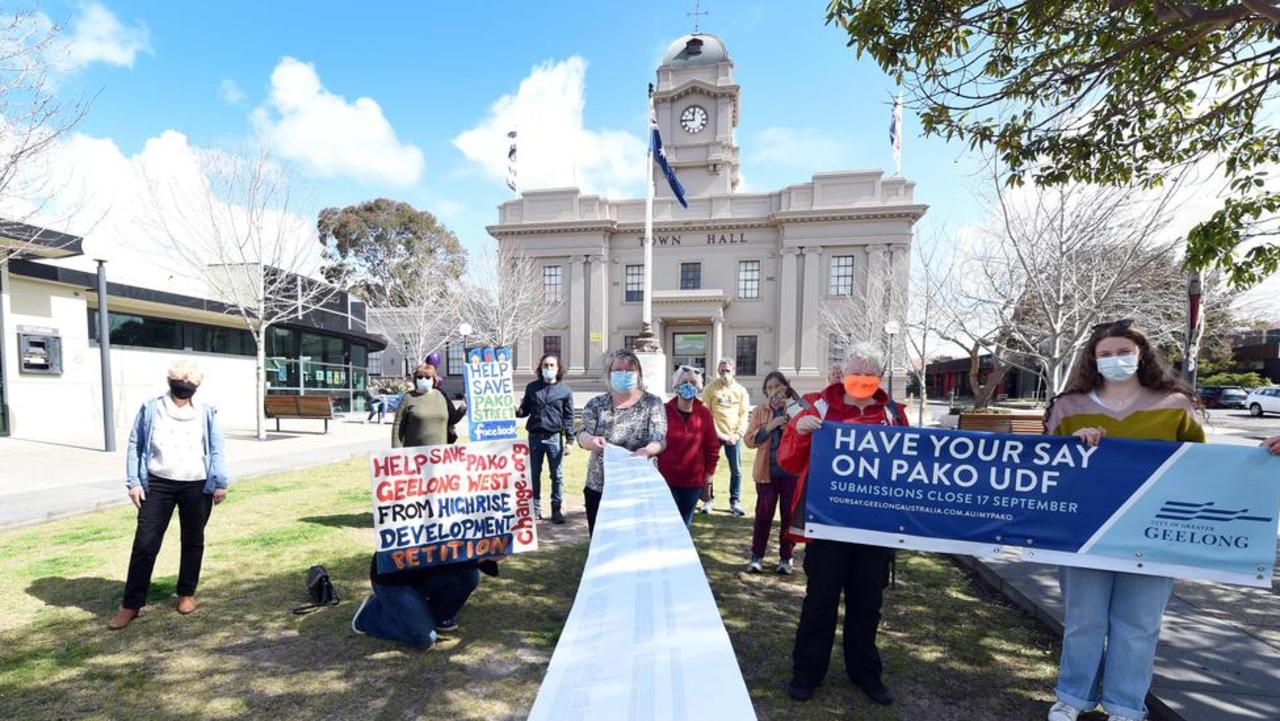Geelong council votes on future of Pakington St’s northern precinct following ‘community panel’ process
A woman was evicted from Tuesday night’s meeting at City Hall immediately before councillors voted on whether to develop the northern end of Pakington St, with one saying the plan would only benefit property developers.

Geelong
Don't miss out on the headlines from Geelong. Followed categories will be added to My News.
Emotions were running high at City Hall on Tuesday night as Geelong councillors voted on whether to proceed with higher density development at the northern end of Pakington St.
Immediately prior to councillors voting 8-3 in favour of adopting an urban design framework (UDF) that will allow for buildings up to 10 storeys high from Church St in the north to Waratah and Wellington streets in the south, a female crowd member was evicted from the chamber.
“There’s no social housing, there’s no social housing, there’s no social housing,” she yelled.
Her comments came after councillor Jim Mason, who introduced the motion, said affordable and social housing options in the area would increase courtesy of the UDF.
Councillors Sarah Hathway, Anthony Aitken and Elise Wilkinson opposed the recommendation from council officers to support the UDF.
The proposal stemmed from a months-long process that saw a “representative community panel” of 32 people vote on preferred building heights on a block-to-block basis.
Ms Hathway was the only one of the trio to speak.
She raised concerns about the panel process and urged her colleagues not to rush the “end process” following several years of community consultation.
“If this UDF were to be passed tonight, the only beneficiaries would be developers who own property in the area set to maximise development at the risk of negatively impacting the unique village style feel of Pako, particularly in the heritage core area,” Ms Hathway said.
That comment elicited a strong rebuke by councillor Eddy Kontelj, but was audibly supported by crowd members who had earlier raised concerns with the panel process during the question and answer element of the meeting.
Mr Kontelj conceded council’s decision would upset some people, while pleasing others.
Kardinia ward councillor Bruce Harwood said Geelong’s urban sprawl was unsustainable in the long-term and the UDF would be gradually implemented over the next three decades.
Brownbill ward councillor Peter Murrihy said the UDF would enhance the visual appeal of an area that was in need of improvement.
“No one could convince me otherwise that we shouldn’t be doing something with north Pako,” he said.
“It’s generally in need of some real love and attention.”
Under the adopted UDF, the eastern side of the Pakington north precinct would see building heights stagger upwards, starting at four storeys from Wellington St to just after Waterloo St.
The corner of Pakington and Church streets would allow for 10 storeys, as would the rail sidings yard.
On the western side, developments between six and eight storeys would be allowed up to Collins St, before dropping to four storeys until Clonard Ave.
Six storeys would then be the allowable limit up until the Church St intersection, where eight and 10 storey limits would be imposed.
The ground floor at all locations must remain commercial in nature.
Earlier: ‘Very brave not to’: Last piece of 10-storey Pako plan puzzle in play
The final piece of the Pakington St puzzle could slot into place if Geelong council gives the all clear for the northern end to be developed up to 10 storeys high.
Following a months-long process that saw a “community panel” vote on preferred building heights on a block-to-block basis, councillors will be asked on Tuesday night to endorse an urban design framework (UDF) that has been years in the making.
The precinct takes in Pakington St from Church St in the north to Waratah and Wellington streets in the south.
The panel initially comprised a cross-section of 66 people but when it came time to vote on building heights, roughly half that number remained.

The end result is widely viewed as a big tick of approval for greater density in an area long seen by many as ripe for development given its proximity to services and public transport.
However, opposition groups have been active in their fight, derailing earlier efforts to implement a UDF.
“It would be a very brave council not to endorse this plan (UDF),” one business owner familiar with the process said.
Another said the panel had made it easy for councillors to support the UDF without fear of backlash.
One property owner said the UDF had resulted in some owners achieving “enormous windfall gains and others having their properties devalued depending on what height controls the 32 panel members voted on, according to their own interests”.
They said the panel was “riddled with self-interest and conflict of interest, as there were two camps – the residents opposing future development at a higher density and property owners supporting it”.

The eastern side of the street would see building heights stagger upwards, starting at four storeys from Wellington St to just after Waterloo St.
The corner of Pakington and Church streets would allow for 10 storeys.
On the western side, developments between six and eight storeys would be allowed up to Collins St, before dropping to four storeys until Clonard Ave.
Six storeys would then be the allowable limit up until the Church St intersection, where eight and 10 storey limits would be imposed.
The ground floor at all locations must remain commercial in nature.
One source said some panel members opposed to development “threw their toys out of the cot” when they realised the recommendation for greater density would go to council.
Earlier this year, City Hall chief executive Ali Wastie made the case for more infill projects as Geelong’s population grows.
“We’re aiming for 50 per cent of new housing to be urban infill, up from 25 per cent at the moment,” she said.
“It will mean increased density, with more apartments and townhouses.
“Focused in strategic precincts close to key services such as public transport, shops and employment centres, this type of development can bring genuine benefits beyond affordability.”
City Hall endorsed the UDF for the Geelong West end of Pakington St and for Gordon Ave in December 2021.
More Coverage
Originally published as Geelong council votes on future of Pakington St’s northern precinct following ‘community panel’ process







